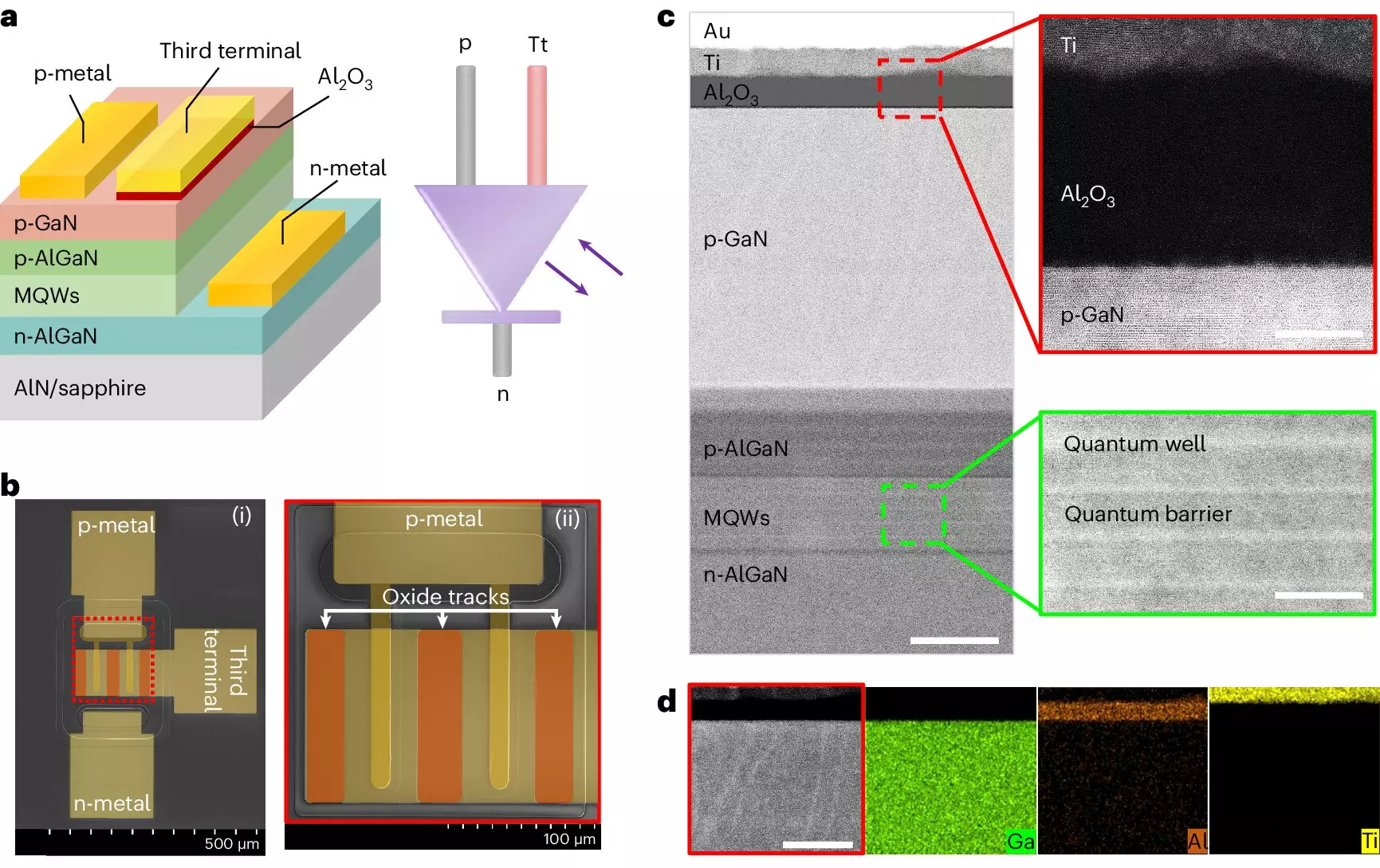In a recent breakthrough, researchers at the University of Science and Technology of China have developed a revolutionary three-terminal diode that has the ability to both emit and detect light. This innovation marks a significant advancement in the field of optoelectronics and opens up a plethora of possibilities for highly efficient wireless communication and light-driven computing systems.
Enhancing Functionality of Optoelectronic Devices
Led by Prof. Haiding Sun, the research team identified the limitations of traditional two-terminal devices and sought to enhance the functionality and performance of conventional optoelectronic devices. By introducing a third terminal to a gallium nitride-based p–n diode, the researchers were able to create a multifunctional device that can serve as both a light emitter and a photodetector. This new diode showcases significantly improved capabilities in optical wireless communication (OWC) and lays the foundation for the development of optoelectronic logic gates (OELGs) for advanced computing technologies.
The operation of the three-terminal diode as a light emitter involves modulating light intensity by adjusting the bias applied to the third terminal. This mechanism allows for a substantial increase in modulation bandwidth, making it ideal for high-speed data transmission in OWC systems. Additionally, the device can function as a photodetector by utilizing both voltage and incident light as inputs, enabling the establishment of reconfigurable NAND and NOR optoelectronic logic gates. The versatility of this diode sets it apart as a dual-functional device architecture with the potential to revolutionize data transmission methods.
Initial tests of the three-terminal diode have shown a significant enhancement in modulation bandwidth, surpassing existing OWC systems that utilize traditional light-emitting diodes. This breakthrough paves the way for the development of faster, more efficient, and reliable data transmission methods in OWC technology. The seamless transition between emitter and detector modes further underscores the versatility and practicality of this innovative approach. The researchers believe that this technology holds promise not only for gallium nitride materials but also for other semiconductor platforms, offering a pathway to multifunctional and integrated electronic and optoelectronic systems.
Future Prospects and Research Focus
The researchers are optimistic about the future applications of the three-terminal diode in fabricating OWC technology capable of transmitting data at higher speeds and driving innovative optically controlled computing systems. Moving forward, the focus will be on refining the performance of the diode and exploring integration with other optoelectronic materials and systems. This ongoing research aims to further enhance the capabilities of the diode and unlock new possibilities in the field of optoelectronics.


Leave a Reply